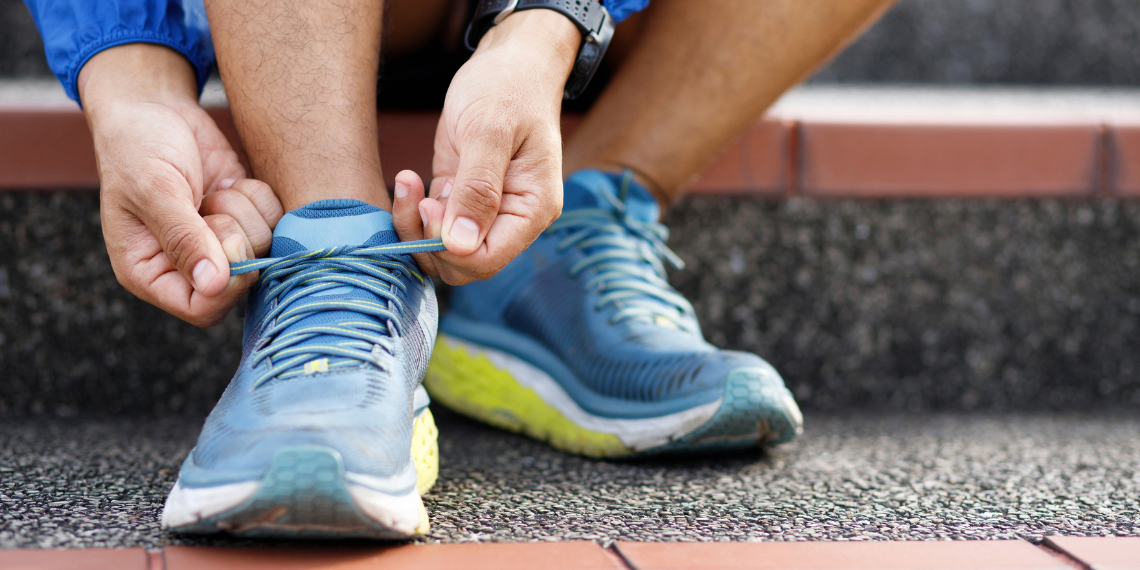Is it Getting Hot in Here? How Heating the Skin on Your Feet May Help Rehabilitate Loss of Balance

When was the last time you looked at your feet and thought, “I am so grateful I can feel the ground beneath my feet?” You are probably far more apt to notice these workhorse appendages when you stub your toe and curse the day you were born from the pain. But, as the old saying goes, “you don’t know what you have until you lose it,” and this may be especially true when it comes to the feeling in your feet.
Imagine that you feel nothing when you stub your toe or trip on things because you can’t feel them underneath your foot. This is what can happen when the foot is no longer able to sense tactile inputs from the environment and relay this information to the muscles involved in maintaining balance. It’s more common than you might realize — both diabetes and the natural process of aging can cause skin receptors in the foot to lose their ability to sense tactile information from the environment, making it hard to maintain balance.
Much like a baseball being hit to outfield, once lost, natural foot sensitivity is going, going gone.
Research from the Department of Human Health and Nutritional Sciences may offer a new approach to this loss of function. Dr. Leah Bent and her team have found that enhancing skin sensitivity of the foot sole with gentle heating can improve motor reflexes in the lower leg muscles. It’s the first study to show the rehabilitative potential of heat to improve balance and posture control.
“Losing cutaneous receptors within the foot increases health risks such as falls and wound development because essentially you are ‘walking blind.’ This, in turn, decreases confidence and feelings of safety,” explains PhD candidate and lead author Erika Howe.
When people lose their confidence in walking, they are more likely to become dependent on mobility aids or become less active. “Mobility is independence,” notes Howe.
The idea behind the study was brilliantly simple. Previous research by others in the field showed that heating the skin on the sole of the foot can increase its sensitivity to sensory input. Howe and Bent took this one step further to ask: if skin can be made more sensitive with heat, might that also translate to enhanced motor reflexes to improve balance?
In a study published in the Journal of Applied Physiology, the researchers measured motor reflexes in the lower leg muscle in response to foot vibration. When the skin on the heel of the foot was gently warmed beforehand, it led to a significant increase in the motor reflex response. Essentially, the heat helped restore communication between the foot skin receptors and lower leg muscles.
While more research is needed to fully explain this connection, one possibility is an increase in blood flow. By applying heat to a specific location, the resulting increase in blood flow can bring nutrients and/or oxygen necessary for skin receptors to function more effectively. More sensitive receptors mean more information is relayed to the muscles of the foot and lower leg, giving the body a better chance to equilibrate to whatever surface it is standing on to stay upright.
While other senses, such as sight, play a huge part in maintaining balance, recovering some functionality of the foot could significantly impact rehabilitation practices.
“Heat is an easy sell because everyone likes to feel warm and cozy. It can be easily integrated into clinical interventions,” says Howe. “Therapeutic strategies that are attractive to the user are an added benefit.”
Trips and falls are well-known risks for the elderly. But Howe suggests that it’s never too early for people of all age groups to start appreciating the hard work that their feet do. Even standing still, your feet and lower leg muscles are working tirelessly to keep you upright.
“Appreciate and acknowledge tactile involvement in movement and balance. Being able to feel with your feet is usually taken for granted, and it’s hard to miss it until it’s gone,” says Howe.
Read the article in the Journal of Applied Physiology.
Read about other CBS Research Highlights.